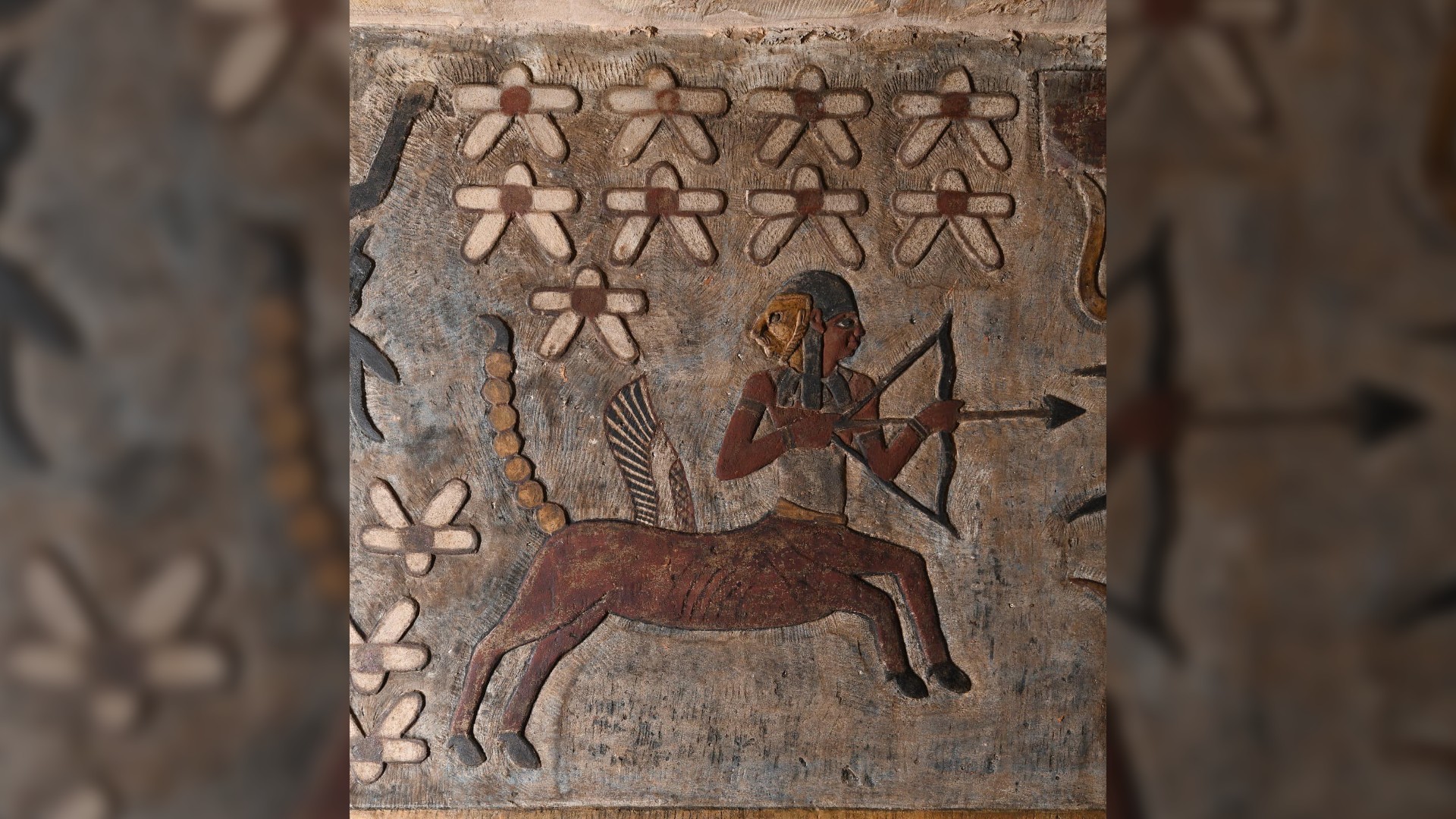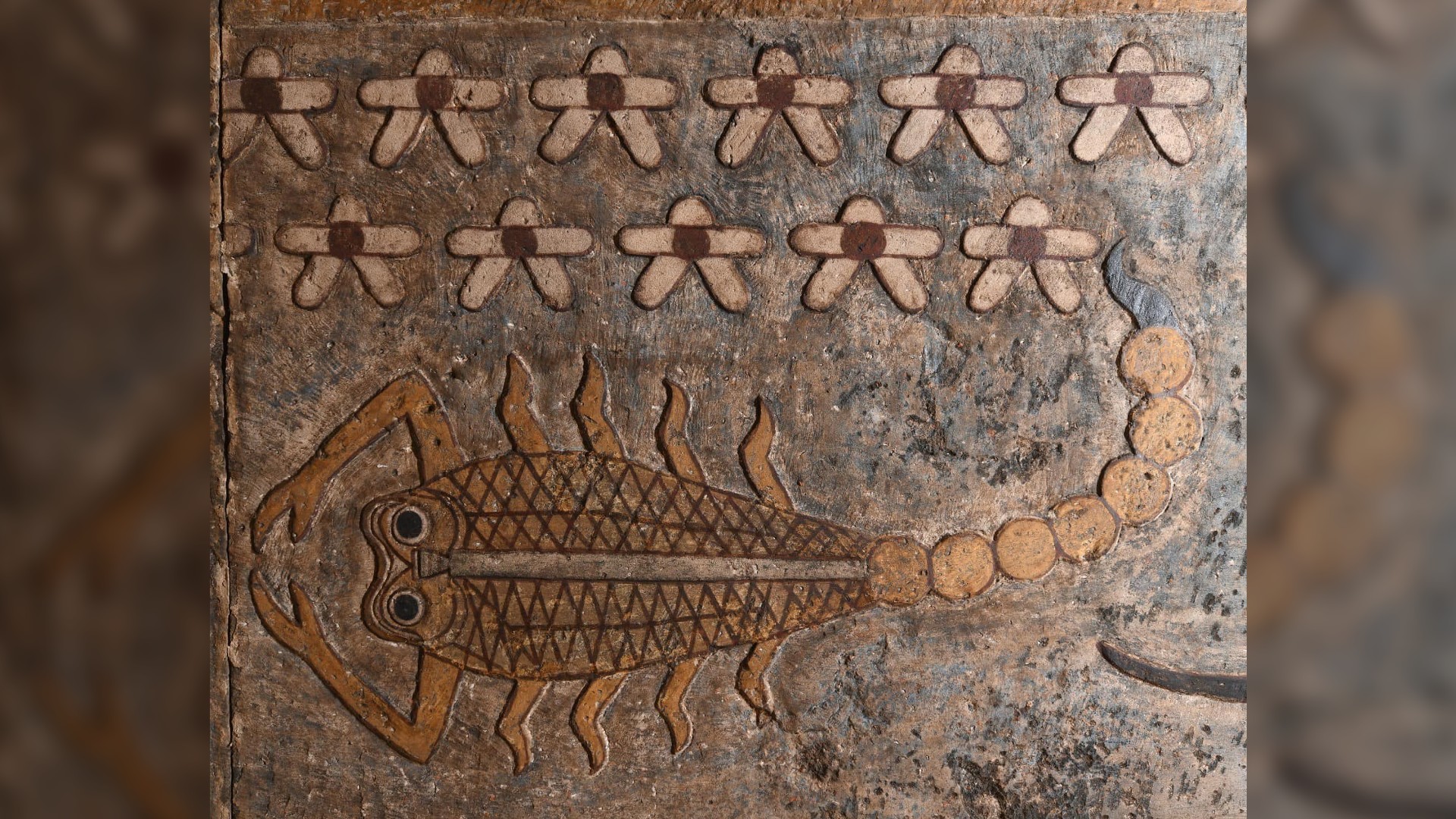Ancient zodiac paintings on Egyptian temple see the light of day after 2,200 years
A restoration project has revealed ancient Egyptian zodiac paintings and inscriptions at the Temple of Esna.

Gorgeous zodiac paintings decorating the roof and walls of the 2,200-year-old Temple of Esna in southern Egypt have been revealed during a restoration project that's clearing away two millennia's worth of grime, soot and bird poop, researchers announced March 20.
Restorers painstakingly cleaned the zodiac artworks, many of which were painted onto the temple's ceiling. Other restored images include depictions of the planets Jupiter, Saturn and Mars, as well as images of stars and constellations used by the ancient Egyptians to help measure time, researchers said in a statement. The team also conserved ancient images of snakes, crocodiles and hybrid creatures, such as a snake with a ram's head.
While the existence of the zodiac and some of the other images at the temple were already known to researchers, the cleaning and conservation have allowed the artwork to be seen in more detail. The restoration work also revealed previously unknown inscriptions, team co-leader Christian Leitz, an Egyptology professor at the University of Tübingen in Germany, told Live Science in an email.
Related: Roman 'zodiac' coin with cancer sign unearthed in Israel
Ancient zodiac
"The zodiac itself is part of Babylonian astronomy and does not appear in Egypt until Ptolemaic times," Leitz said in the statement. The Ptolemies were a dynasty of rulers descended from one of Alexander the Great's generals, who ruled Egypt between 304 B.C. and 30 B.C, Leitz said. It may have been the ancient Greeks who introduced the zodiac to Egypt.
After its introduction, the zodiac became popular in ancient Egypt. "The zodiac was used to decorate private tombs and sarcophagi and was of great importance in astrological texts, such as horoscopes found inscribed on pottery sherds," Daniel von Recklinghausen, a researcher at the University of Tübingen, said in the statement. While few ancient Egyptian temples had zodiacs depicted on them, a well-known example is a temple at Dendera, which has the zodiac along with images of five of the planets, Leitz told Live Science.
The zodiac used at Esna is similar to the zodiac used today, Leitz told Live Science. "There is no difference apart from some depictions of the signs," he noted.
Get the world’s most fascinating discoveries delivered straight to your inbox.
From the photos the team released, it is clear that the images are much more visible than before the restoration, Juan Antonio Belmonte Avilés, an astronomer at the Institute of Astrophysics of the Canary Islands (IAC) in Spain who has conducted extensive research on astronomy in ancient Egypt, told Live Science in an email. We will have to wait until more is published until we can tell exactly how much new information the cleaning has provided, said Avilés, who was not involved in the restoration.
The team is in the process of analyzing the new inscriptions, Leitz said. The Temple of Esna is located 37 miles (60 kilometers) south of Luxor (ancient Thebes), the statement notes. Hisham El-Leithy, an archaeologist with at the Egyptian Ministry of Tourism and Antiquities, is a co-leader of the team, while Ahmed Emam, a conservation expert at the ministry, led the restoration work.
Previously, archaeologists working on the Temple of Esna restoration project unveiled 46 depictions of goddesses from ancient Egypt. The temple is dedicated to the Egyptian deity Khnum, who is associated with fertility and water.

Owen Jarus is a regular contributor to Live Science who writes about archaeology and humans' past. He has also written for The Independent (UK), The Canadian Press (CP) and The Associated Press (AP), among others. Owen has a bachelor of arts degree from the University of Toronto and a journalism degree from Ryerson University.




